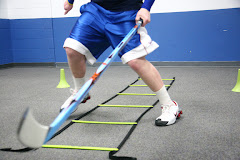"The hockey tough state is based on two things: focus and feeling. Your state is what you bring to any on-ice situation, whether it’s in a game or in practice. You are responsible for your state. Most people think the word responsible means if you screw up or make a mistake, you’re in for trouble. Actually, responsible means response-able. You are response-able for managing your mental TV. By that I mean you are response-able for creating the feelings and focus that will help you excel on the ice."
"Being hockey tough involves taking response-ability for managing your mind in order to be the best you can be. To help you manage your feelings and focus your mental state, remind yourself to have a clear, positive focus, keep it simple, and use breathing to create right feelings and to change channels on your mental TV."
The above was an excerpt from the book Hockey Tough, by Saul Miller. Miller, one of North America’s most prolific and sought-after sport psychology consultants in hockey, presents mental exercises and assignments to help players:
- develop a winning attitude on and off the ice
- stay focused to execute skills and tactics
- maintain the mental stamina required in this physically demanding sport
- overcome emotional fatigue and physical aches and pains to perform at the highest level throughout the season
- manage their anger to avoid costly penalties in crucial game situations
- develop the discipline and tenacity to force and capitalize on opponents’ mistakes
Grab your copy of Hockey Tough by visiting www.amazon.com!
.jpg)






